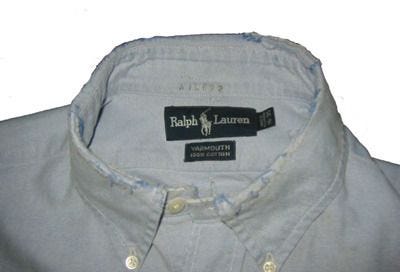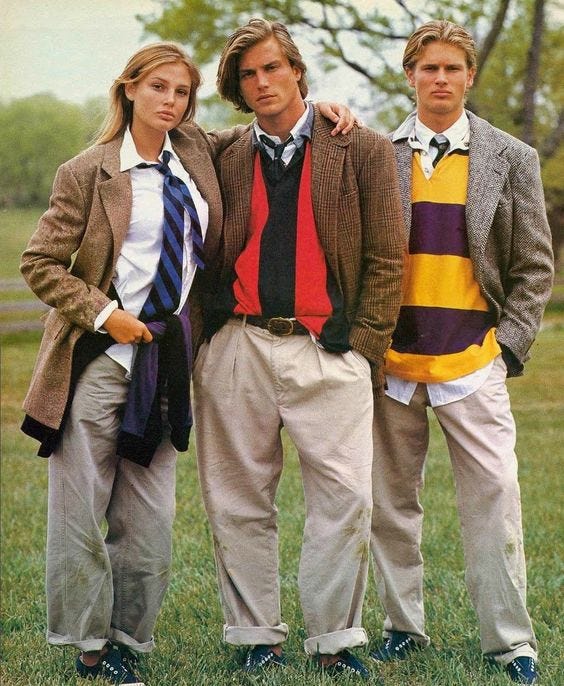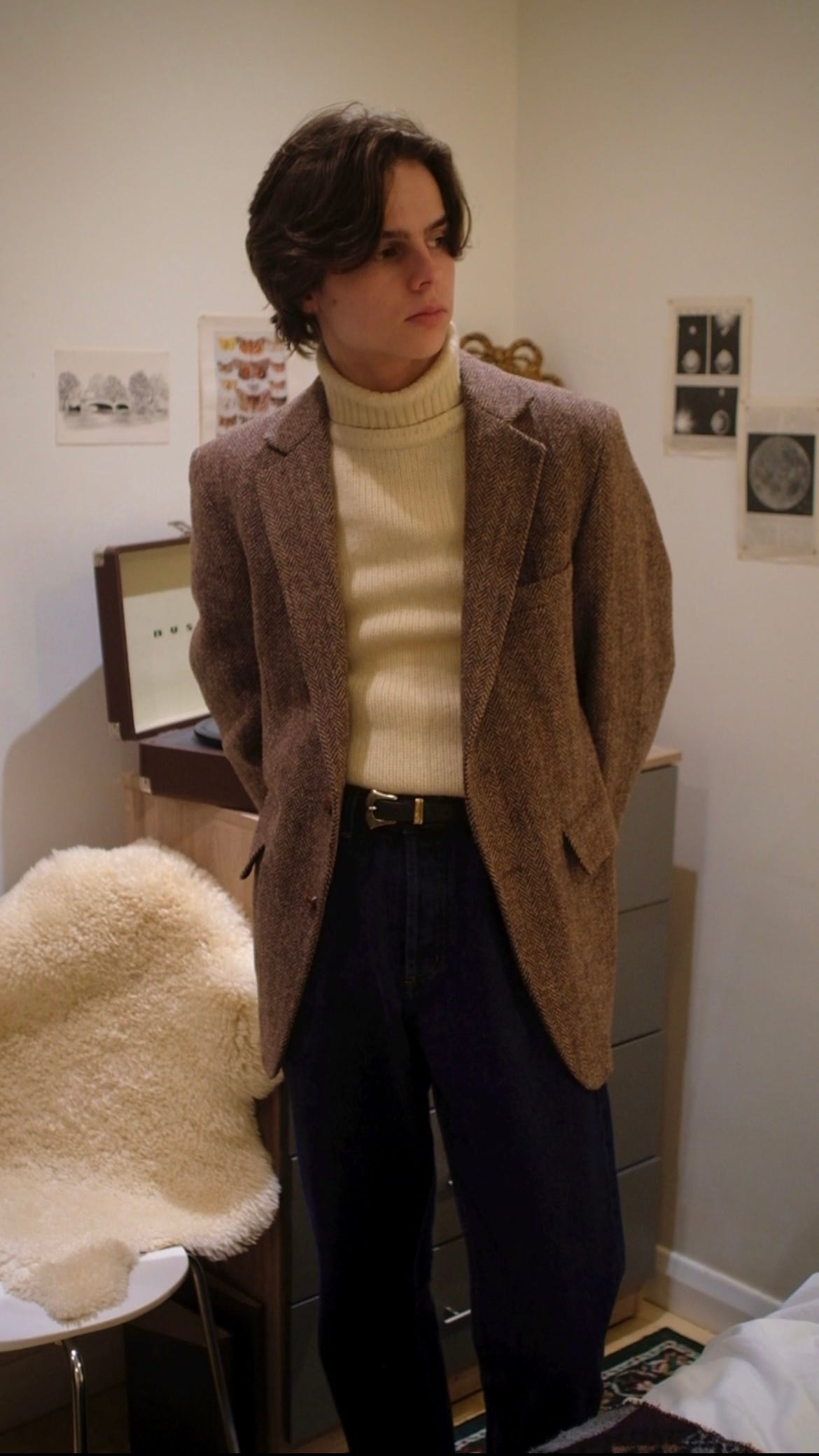Housekeeping
Thank you for joining us for this week’s meeting, in case you missed last week’s Club Chair Bulletin, please be aware of the new Pinboard and Store Directory pages, for inspiration and retailers respectively. Both I hope to keep updated regularly.
Also, please consider inviting a plus-one to this meeting by sharing it, it would be greatly appreciated.
That’s all for housekeeping this week.
Prepwear as sustainable practice
Sustainability is inescapable in the consideration of style, fashion as an industry contributes 10% of global carbon emissions1. As I have been broadening my knowledge on Ivy, and in response to a number of conversations I’ve had with other style conscious individuals, I’ve started to consider my own style’s relationship with the environment. Today I’d like to posit several mechanisms through which I believe the collegiate styles can be considered sustainable practice.
This comes first with the recognition that “Carbon Footprint” as a term is ideological and functions to detract from the environmental affects perpetuated by corporations by focussing on the individual. This meeting seeks to meet this by exploring ways in which our consumption can be withheld, thus prompting better practice from corporations which rely upon that consumption.
There is also the consideration that the collegiate styles tend to be associated with social groups perhaps known to engage in superfluous consumption. This is a persistent discourse within our sector as to whether dressing in this manner suggests a desire to pursue the life which it has represented, something which is tackled a lot too in the consideration of Black Ivy. For the sake of this article, I will be looking only at engagement with the clothing.
Mechanism 1: Having less sh*t
It’s pretty obvious, right? The best thing for the planet is to produce and purchase less sh*t. Key here is that the collegiate wardrobe is pretty suited to this. Derived from a period when wardrobe selection was smaller anyway, one can construct a very wide selection of outfits from a small assortment of classics. Classics which, depending on styling, can take one to most places that the usual individual expects to go, and can traverse seasons with the addition or removal of layers.
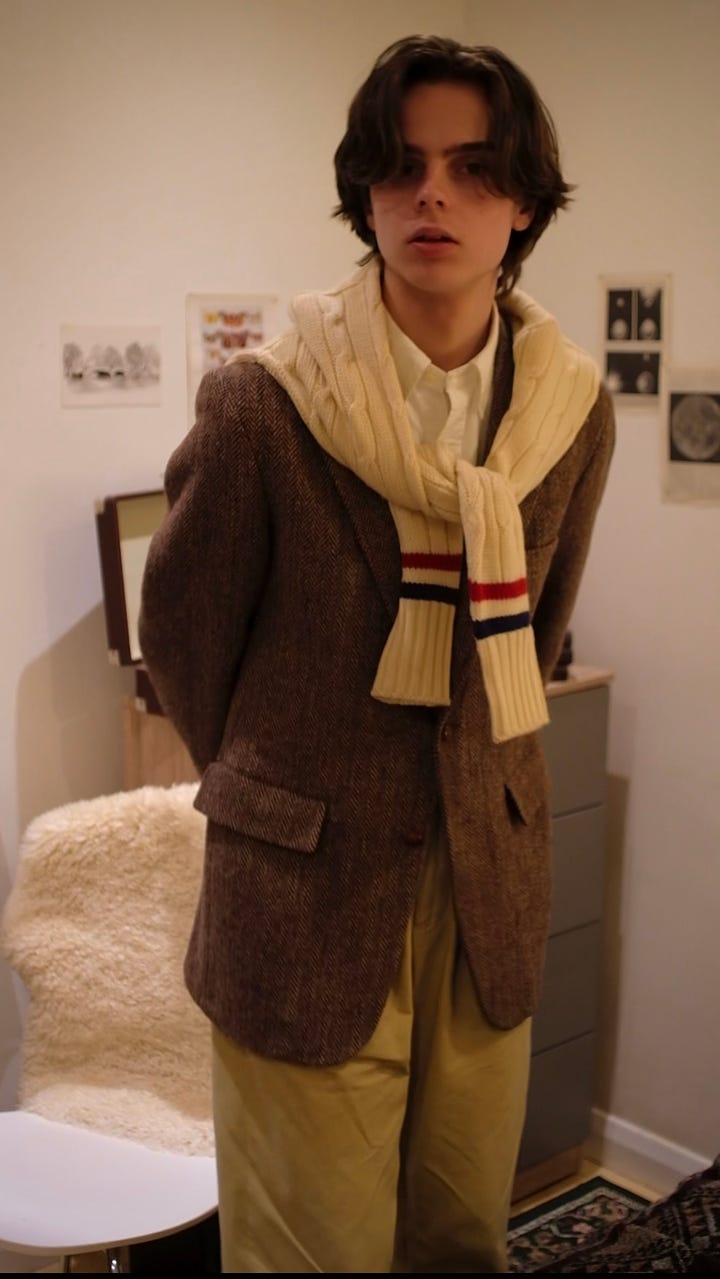
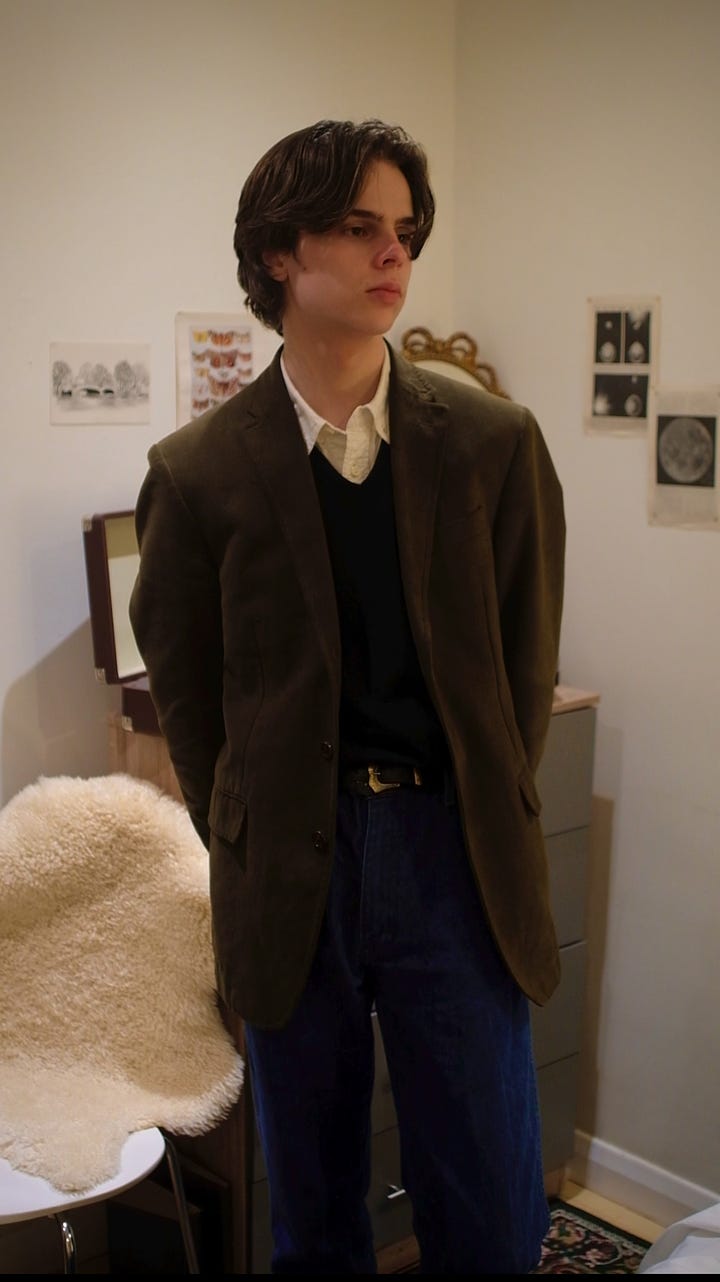

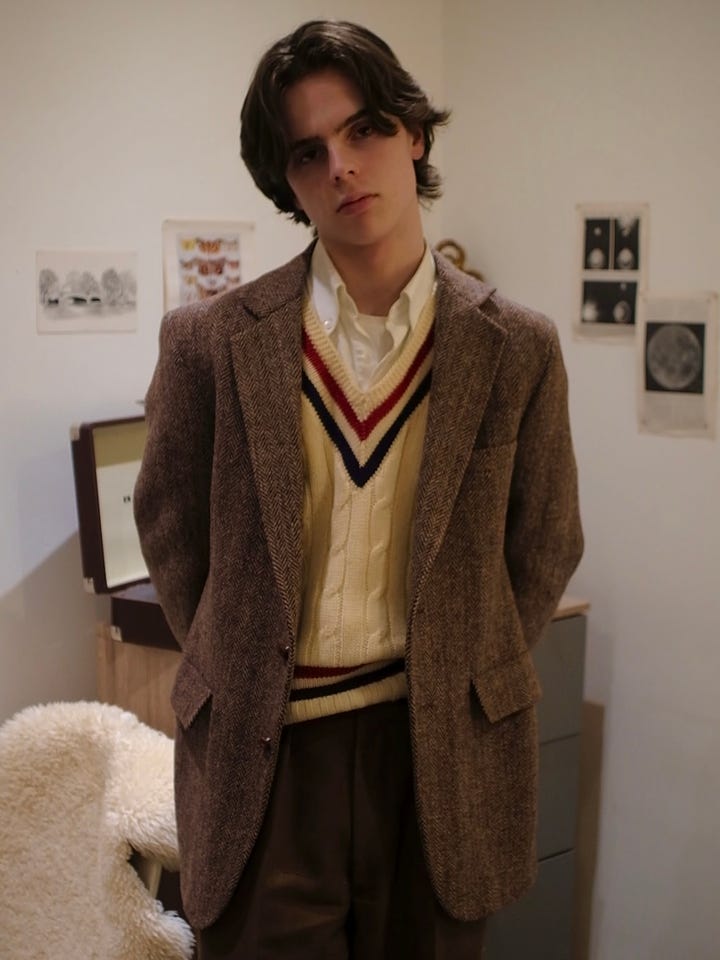
In terms of what this minimal Ivy wardrobe looks like, it’s going to depend heavily on the individual, I am certainly not going to provide a predisposed set of “essentials”. Perhaps as a template though you are looking maybe at a week or so’s worth of shirts, which isn’t necessarily one per day, if you take a look at many classic Ivy photos you can note white t-shirts worn under Oxfords, which helps them to go two wears without a wash. Then a couple jackets, a rotation which suits your home climates, note that half and unlined Ivy coats are especially suited to year-round wear, same for trousers. A heavy overcoat and lighter jacket, some knitwear, you don’t really need me to spell it out this much. The trick is a rotation which serves to extend to lifespan of garments, whilst still remaining minimal. In doing so, it also serves to aide in the development of a wardrobe in which all pieces are coherent with one another, which I have to admit I am somewhat of an obsessive about.
Mechanism 2: Wear is wanted
On the mention of the extending of a garment’s lifespan, the origin of my consideration of Ivy with sustainability was really the Ivy dresser’s approach to wear on their clothes. The Ivy wardrobe is one that looks better having been worn, and you don’t have to look far to find suggestions that having marks on your khakis is vital to the look.
Take the shaggy dog/brushed wool jumper for example, or a good old pair of 501s. Stone washed cotton, tweed, worsted, Oxford, are all cloths which wear in beautiful, communicative ways. The greater point being though, that when you do find a hole in that jacket, or fraying on that tie, you wear it anyway, and it looks great. Really it works in conjunction with the softer garments to reify the identity of the collegiate styles as genuinely casual, rather than the austerity and properness of something like business casual.
Repairs too, elbow patches, darns in socks, patches on pants. And having the knowledge that your use of a piece is the reason it has that repair, engaging in the act of repairing it. One can assume that for club members, the relationship to our clothes extends beyond wearing them, the efforts taken to find and afford them, morph into efforts to keep them in our wardrobe for as long as possible, whilst these styles do a wonderful job of just being clothes, for the obsessives among us, there are swathes of beauty to be found in repairing what we wear.
The collegiate styles, to me, represent perfectly how slow fashion can look outstanding, not only in spite of wear but because of it
Mechanism 3: Considering Timelessness
“Slow Fashion” is a term which I have been seeing increasingly frequently, which is somewhat ironic. In fact I am very interested in delving further into the manner in which timelessness appears to be trending within the world of fashion, in regards to silhouette especially. I think too that recent interest in Ivy style is a facet of this, and as such I perhaps owe my being here to this trend of timelessness. When considering this, a distinction tends to be made between trend and fad, and then what follows is the utilisation of trend to refer to a larger movement which happens over a number of years. Perhaps the advent of slow fashion is one of these, it seems reasonable to suggest it is, and if it is, then Ivy is a fine style through which to engage with it, for both the reasons mentioned above, and because of its persistence through the last seventy years.
I can see a number of modes through which one can achieve timelessness through Ivy. One is to take a more period-correct, cosplay-esque approach, I think this is suited if one finds themselves drawn specifically to a particular era of the style. Thus, committing to that and to doing it in a wholly convincing manner grants one a total immunity to trend chasing.
That’s great for some, but not for me, another approach, which I try to subscribe to, is to explore and bring together eras, but keep silhouettes in accordance with the original garments. That is to say, chinos stay wide, but jeans lean toward straight leg, jackets are full and long, shirts are voluminous. There is no one “classic silhouette” but rather wearing garments as they were originally conceptualised, which can function to resist trend chasing. I combine this with a conviction towards the silhouettes in which I feel comfortable, principally this means trousers which sit just above my natural waist, classic 2:1 ratio.
I can also see an approach in which one utilises the persistence of Ivy to gently follow general trends in silhouette and garment choice, without ever overhauling one’s wardrobe. I’m sure this is something which I will engage with from time to time, considering I have many years of dressing ahead of me.
I think confidence and conviction are the most important factors in achieving timelessness, one needs to stand proudly in defiance of trends and believe wholly in their ensemble. Of course that is not an easy feat, but it extends to more than just minimising environmental impact.
Mechanism 4: Natural Fibres
Due to their antiquity, these styles can be constructed entirely from natural fibres. It is for this reason that many of these pieces age so well. I have always championed natural fibres, but in reading up for this meeting I have come to understand just how dreadful polyester and nylon are for the environment2. These cloths shed micro plastics when washed, which then persist and accumulate in our water supplies. They also cannot be recycled, and hang on to odours such that efforts to extend their life are somewhat pointless.
With an apology extended to gorp fans, there is also the consideration of PFAS as waterproof treatment34. The Ivy-classic that is the wax jacket perhaps being better when measuring the individual environmental impact of a given garment.
With consideration that we are seeking to own less anyway, slowly migrating to a natural fibres only, or at least overwhelming majority, wardrobe, is one of the best ways to minimise the environmental impact of one's clothes. Note slow migration, sort of defeats the point to chuck it all out tomorrow. It is going to look way better too, by the way, and feel better.
Mechanism 5: Dead people’s clothes
This sort of ties everything else together, for all of the above reasons, the collegiate styles lend themselves to the wearing of vintage and secondhand, which you may know by now I pretty much never shut up about. Opting for secondhand garments is probably the best consumption practice, short of not consuming anything, and you’re probably going to get better clothes for less money out of it. With the caveat that it is not entirely clean, nothing can be.
Constructing one’s wardrobe mostly from second hand can keep acquisitions down, as availability is limited, it leans into garments looking worn, maybe aide in resisting trends, and old sh*t, depending on era, tends to feature more natural fibres, in part due to a sort of survivor bias. In consideration of timelessness too, garments from all eras can be brought together.
It can even be argued that the collegiate styles look their best when made from vintage pieces, but even for modern pieces, buying secondhand widens accessibility and softens environmental impact. Head to the club’s Store Directory for a collection of retailers with excellent selections of vintage and secondhand.
So, buy less clothes, buy old clothes, wear them till they wear out and then keep wearing them, and buy natural fibres, and do it while wearing Ivy, not only because Ivy is neat, but because it’s generally very well suited to doing all of those things. Ivy doesn't need a big wardrobe, and it looks great worn out, it’s largely natural fibres, and up to this point it has remained a relevant and rich style with which to present oneself.
I’m quite curious for thoughts on this one, so if you’d care to share, please do.


